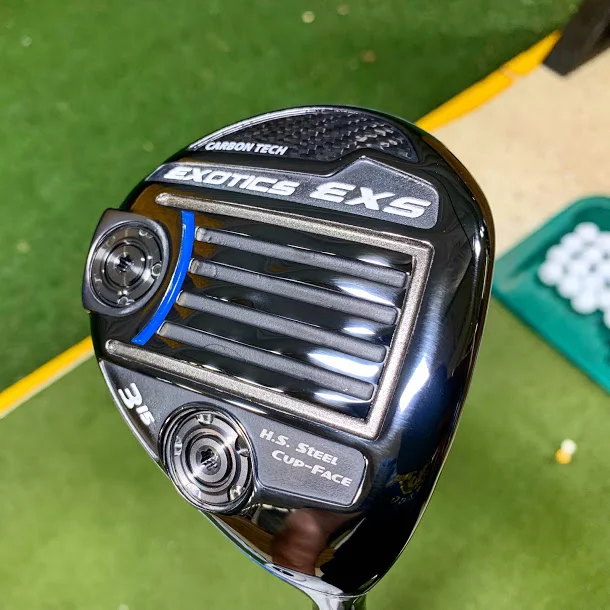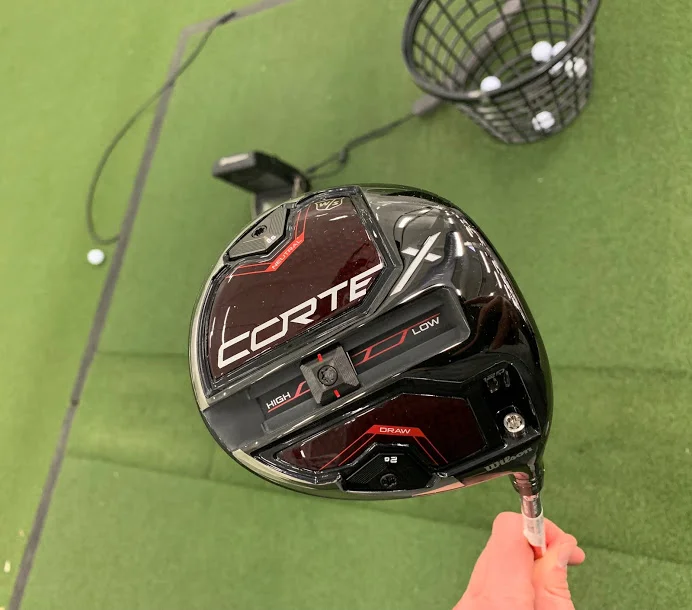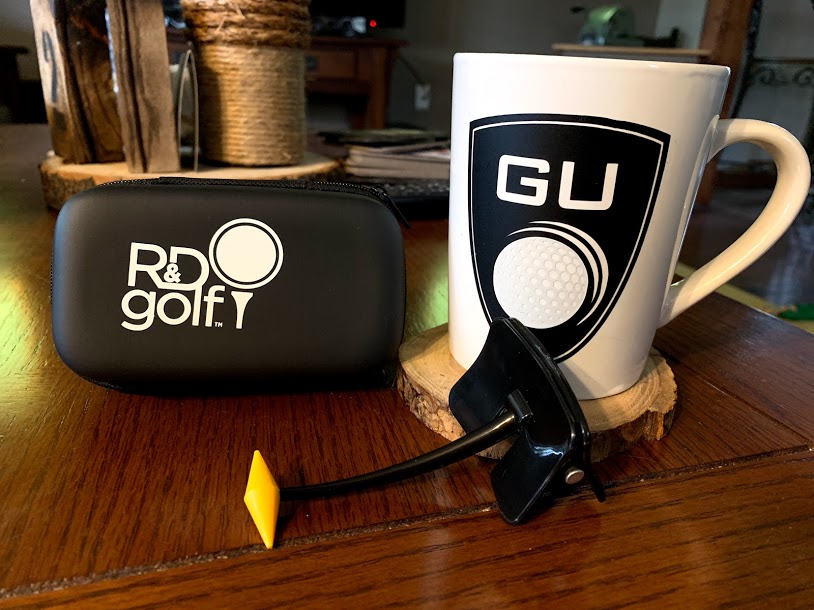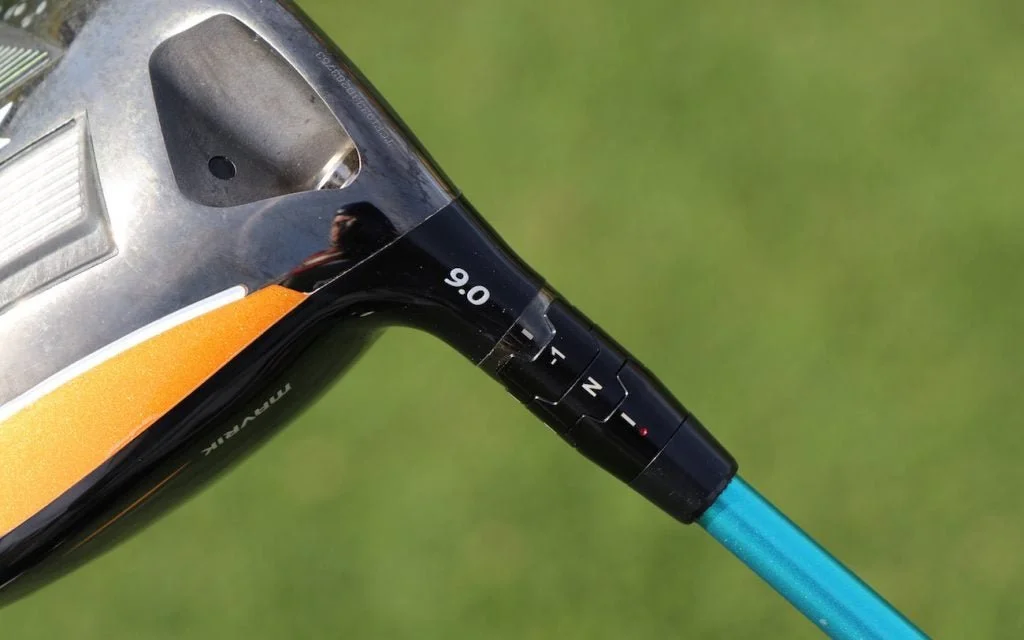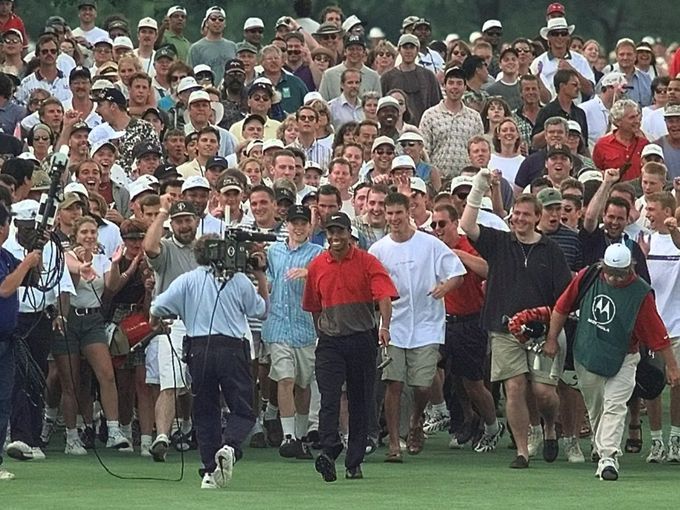Golf Life Navigators | Episode 184
Jason Becker, CEO of Golf Life Navigators, joins the show to share the background and benefits of his company.
Jason Becker, CEO joins the show to talk about Golf Life Navigators: a company that specializes in helping you find the private country club or golf club that fits your lifestyle.
Visit Golf Life Navigators at their website, www.golflifenavigators.com.
REVIEW: Tour Edge Exotics EXS Fairway Wood
The Tour Edge Exotics EXS fairway wood promises high-end performance at a low-end price point. Does it deliver? Read our review here.
Tour Edge Exotics EXS Fairway Wood
Pound for Pound, Worth Your Time
The Tour Edge Exotics EXS fairway wood is the higher-spinning, more forgiving cousin to the company’s excellent CBX line. Comprised of high-end materials at a lower price point than its competitors, the EXS makes a strong case to be the surprise offering of 2018.
Background
Officially released in November 2018, the EXS boasts a build featuring materials like carbon fiber and high-density steel that are usually found in the Big Boy OEM products. As such, those clubs are usually priced upwards of $300 for fairway woods due to the higher operating margins the keep the lights on at the larger brands.
Tour Edge decided to flip the script and tighten their margins in an attempt to gain market share in this space. Priced at a more affordable $230, the EXS still features all the bells and whistles you’d expect in a modern high-performing wood.
The loaded-with-technology fairway metals feature a Flight Tuning System (FTS) that includes 11- gram and 3-gram interchangeable weights, Cup Face Technology with Variable Face Thickness (VFT Technology) for an expanded sweet spot, multi-material usage of Carbon Fiber for ideal weight distribution and a new and improved SlipStream™ Sole for faster clubhead speed through the turf.
At the end of the day, however, consumers will flock to trusted names — or those who have the highest marketing budgets. To overcome this competition, Tour Edge needed to hit a home run with their newest line.
Appearance and Feel
The Tour Edge Exotics EXS fairway wood looks clean, professional, and minimalist. The club’s crown features the popular carbon fiber pattern than blends nicely into a deep black finish throughout the clubhead. Dark blue accents surround the club, adding to its overall attractiveness.
The sole of the EXS is a little busy due to the waved ridges in the heart of the club, and the interchangeable weights accentuate this feature due to their placement. These weights — 11 grams in the heel and 3 grams in the back of the club — can be switched to adjust launch and spin conditions. Tour Edge also sells additional weight options to customize the club to your needs.
The clubhead is slightly larger than I would prefer, but the deep face and low profile is fantastic. The club looks like you can hit it from any lie, scooping the ball out of a divot or digging it out of deep rough.
At impact, the EXS feels and sounds crisp and solid. I love a subtle crack instead of a high-pitched “ting”, and the EXS does not disappoint. There is a slight change in sound on miss-hits, which is to be expected but doesn’t become distracting. I need to know when I missed the sweet spot; not everyone else around me.
Performance
I was impressed by the performance of the EXS. Using Top Tracer Range technology at Mistwood Golf Dome, the EXS produced an average yardage of 249 yards with ball speeds averaging 140 mph. Launch conditions were also solid, with 13 degrees of launch and a peak height average of 33 yards. These numbers are similar to my current gamer.
Most impressive was the club’s forgiveness. Shots off the heel or toe found their way back to mid-line nicely, resulting in an average of 5 yards off center.
Overall Impression
When I initially heard about Tour Edge’s thin margin approach in the design of the EXS, I felt nervous for a local brand that’s been garnering a lot of attention. After trying the club, that feeling changed to cautious excitement.
There’s no doubt the EXS delivers on what it promises. It performs just as well as higher-priced competitors in most metrics, and its lower price point should be screaming at you to purchase one tomorrow. But we all know that consumer (us) can be tricky to figure out.
Brand image is a tough nut to crack, and smaller brands need to do all they can to earn your trust— and dollars. I can’t be any more direct than to say the Tour Edge Exotics EXS fairway wood is absolutely worth your consideration, and if running neck-and-neck to another option, will likely be less harsh on your wallet.
Golf Course Architecture with Tony Dear | Episode 183
Golf course architecture is a growing trend on social media, and journalist/researcher Tony Dear joins the show to help us sort everything out.
Tony Dear is a seasoned golf journalist and golf course architecture enthusiast, researcher, and published author. Tony and I discuss what GCA beginners need to know, emerging social trends on the topic, and how modern technology has altered the game.
Follow Tony on Twitter at @tonyjdear.
REVIEW: Ben Hogan Ft. Worth Black Irons
The Ben Hogan Ft. Worth Black irons not only look beautiful, but hold their own in both performance and feel. Read our review here.
Ben Hogan Ft. Worth Black Irons
Beauty, precision, and unmatched feel
(Editor’s note: This is the debut review from GU writer Matt Hackett. Matt is a 3-5 handicap, former collegiate golfer, and has a driver swing speed of 115mph)
Back when my handicap was at its best (2001, age 18), I was hitting hundreds of range balls and playing 3-4 rounds per week, enjoying the plethora of time pre-adult life allowed to spend at the golf course. Back then, us “cart boys” would gladly take advantage of the golf course and range privileges, in exchange for cleaning some guys clubs for the first time since they bought them.
That summer, I remember perusing the used clubs at a second hand golf store, and was immediately drawn to the Ben Hogan ’99 Apex Blades. My eyes lit up in equal parts awe, excitement, and suspicion, in that order.
They were beautiful. Clean. A work of art.
A set of irons I could only dream to put in my bag, if not for the $400-$600 going rate for premium clubs, so I was a bit wary of the $250 price tag. It surely had to be a mistake, especially the -50% (condition) sticker. When I brought the famous “E” wedge up to the counter to ask about the sticker, the cashier had the same suspicious look on his face. As he looked it up in the system, shrugged his shoulders, and told me the price pulled up as $125, I ran to grab the rest of the set and peeled out of the parking lot before he could look further into the matter.
I remember hitting range ball after range ball for months with those clubs until I had laborer-like calluses. They were so pure and so true, practicing became more of a joy than a chore, which is why they stayed in my bag for 15+ years. That was when I was first introduced to the Ben Hogan brand, and the story of my first true love.
While I have been playing blades ever since those Hogans, gone are those days of being able to consistently hit the nickel-sized sweet spot swing after swing. I will admit my ball striking hasn’t been as solid as it was back in the day, but I’m not looking to secure my tour card. I will stubbornly sacrifice a little club forgiveness for the look and feel of a blade.
Most blade irons are designed to have majority of the weight in the sweet spot of a club head, tapering a bit towards the heel and toe. This is probably the perfect club design for tour pros that are able to consistently hit that nickel-size sweet spot: put the weight of the club where the ball makes impact.
The problem is, we aren’t all tour players.
But there are still decent low-to-mid-handicap players out there that want the look, feel, and playability of a blade, but still occasionally hit some shots thin, fat, toey, or heely.
The design team at Ben Hogan wants you to know: you don’t need to be a scratch player to play blades anymore, because the Ft. Worth Black irons are the best of both worlds.
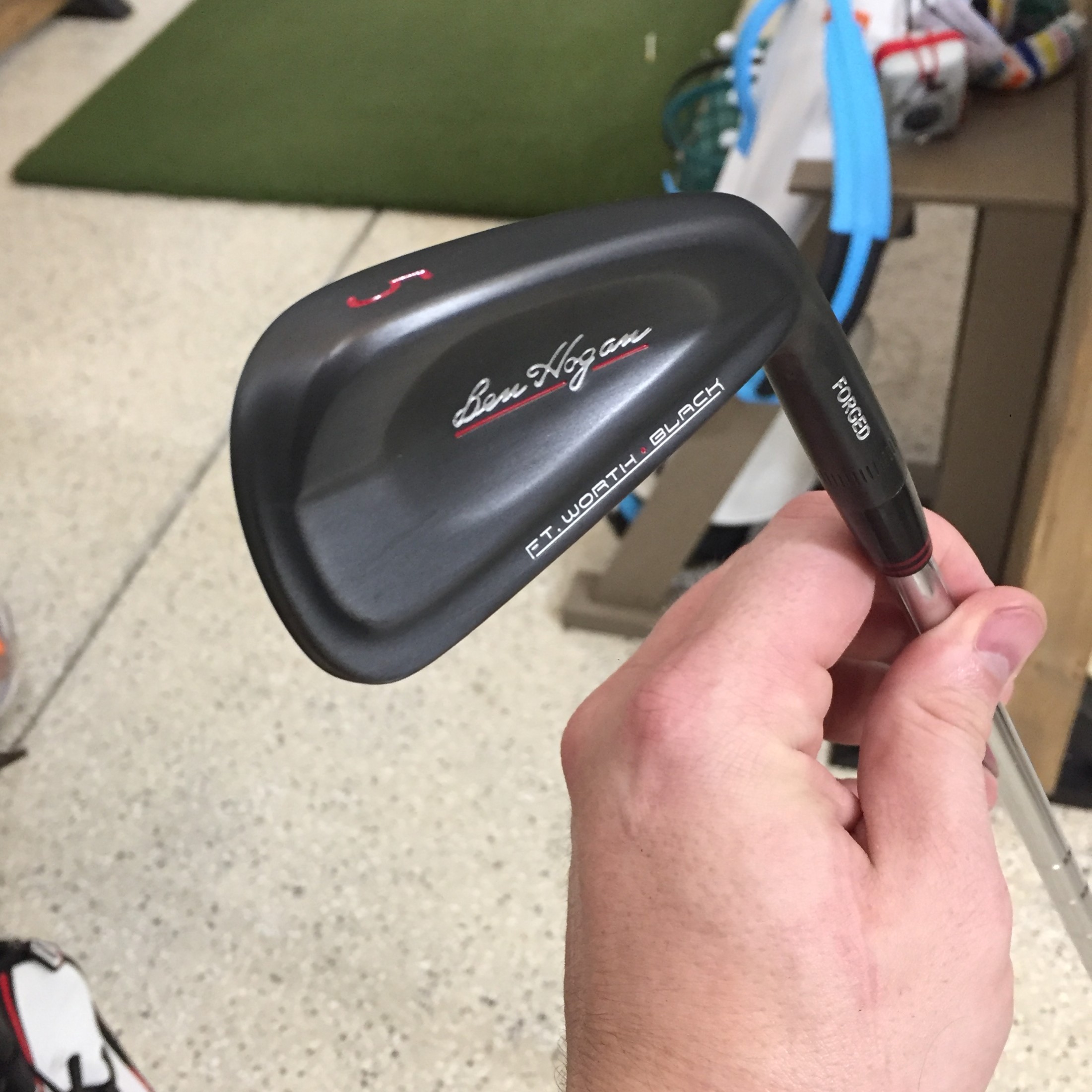
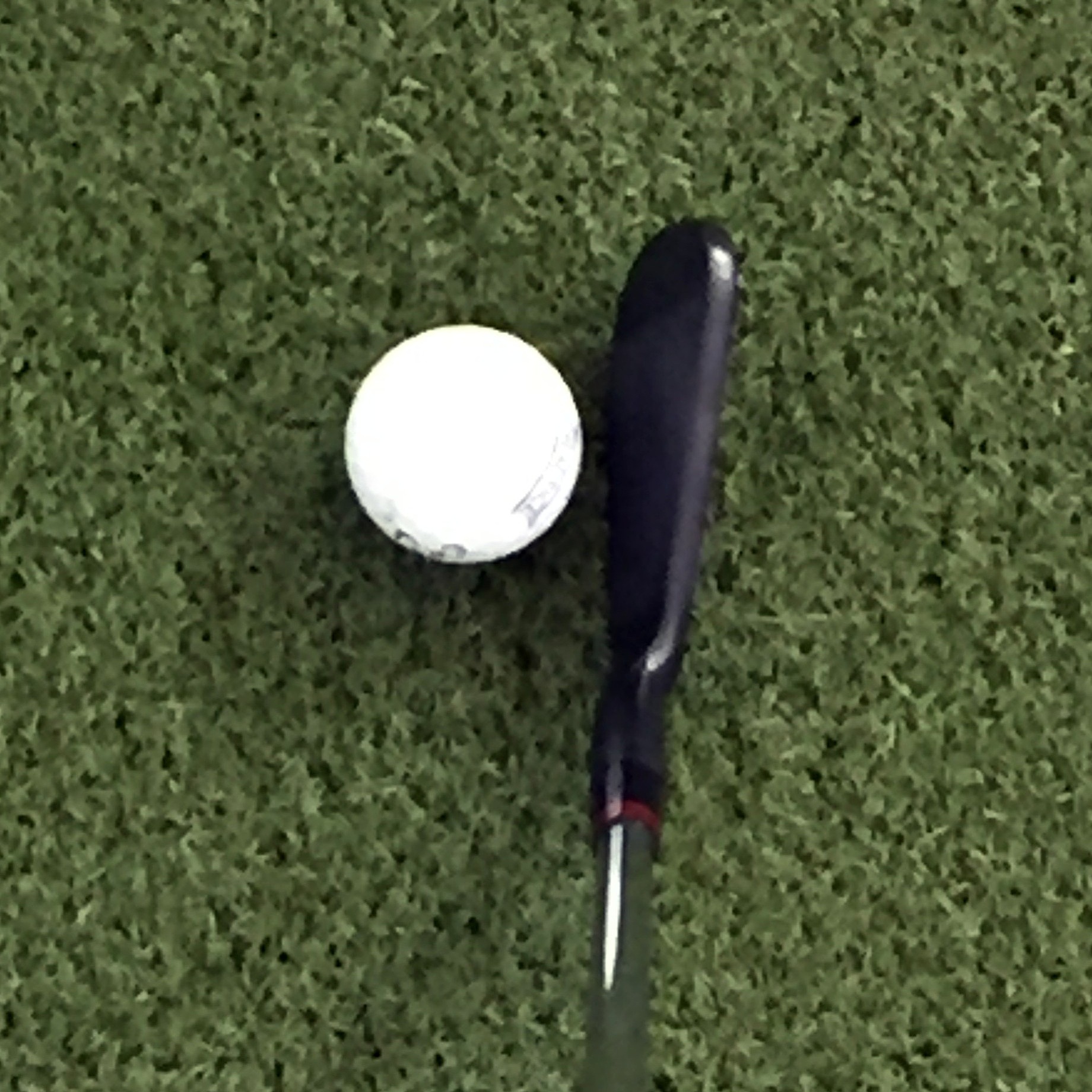
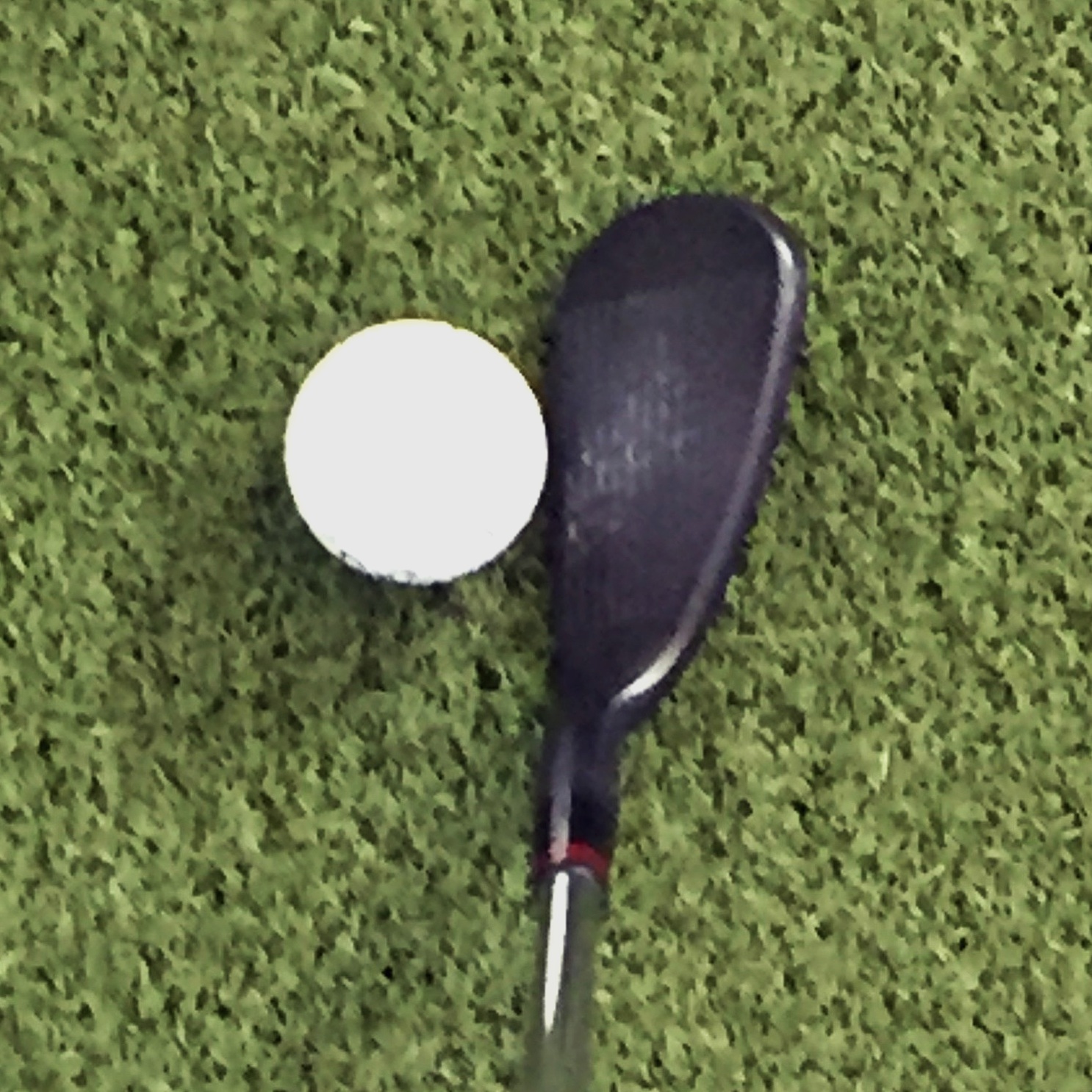
Weighting System
The first thing I noticed on the Ben Hogan Ft. Worth Black irons (besides the black color) was the progressive weighting system for each individual club. Almost any club you hit on the sweet spot is going to fly toward your intended target at a known distance. But for me, I look to see how a club performs when I don’t hit the sweet spot, because golf is obviously a game of misses.
With these clubs, if I hit a ball a little high on the face or a little off the toe, the club has added weight behind those areas, giving more mass behind the ball at impact. Ideally, this would mean my misses will still be closer to my target than a club that has little to no weight in those areas.
This is more pronounced in the long irons, where players tend to have more miss-hits. In the shorter irons, players have an easier time hitting the sweet spot, so the weight is progressively moved more towards the center of the club face.
PreciseLoft System
To me, this is one of the more exciting and forward-thinking aspects of these irons. When Hogan first introduced this loft system, I was one of the few people that thought it was a brilliant idea, giving the player the option to fill out his bag with whatever individual lofts he/she thought best fit their game. Years ago, club manufacturers had to start branding their club designs as going further and further, when in reality, many were just making the lofts stronger. Sure, players were hitting their irons further, but that just increased the distance gaps at the bottom of their bags, especially between the PW and SW or LW. Hence, why gap wedges started becoming popular around the mid-late 90’s, and now are almost a necessity.
I don’t think the idea caught on as much traction as the folks at Hogan had imagined (maybe because players are so accustomed to seeing 7 on the bottom of their club instead of 34°), but the principals remain today: widen the loft gaps with the long irons in order to narrow the loft gaps with the scoring clubs (short irons/wedges).
This chart compares the Ft. Worth Black PreciseLoft system to two competitor iron sets.
Compared to set #1, narrowing the gaps with the short irons gives players smaller distances between clubs, thus helping club selection into the greens.
Compared to set #2, the lofts are identical from 6i down to PW, but the biggest benefit is being able to space out the long irons from 22° to 30° in three clubs (4i-5i-6i) instead of spacing them out from 21° to 30° using four clubs (3i-4i-5i-6i). This allows players to carry an extra club in their bag, whether it is a 4th wedge, hybrid, driving iron, 5-wood, etc. How many of you would love the opportunity to add another club to your bag?
Look and Feel
The Ben Hogan Ft. Worth Black irons are made with a Diamond Black Metal finish, a much different look than a normal chrome or dulled gray color. I think it is a matter of individual preference, but I personally love the contrast it gives against the ball and grass. It looks fantastic.
It is designed to be a very durable finish compared to other black nickel or black oxide finishes, which would also help maintain the integrity of the grooves over time.
I could tell the difference between the black metal finish and typical carbon-steel forged irons. These felt a little harder metal at impact, but had a more consistent feel across all of my shots.
Overall Impression
I have always enjoyed the feel, look, and workability of a blade iron, but struggled finding the sweet spot consistently. The design team at Hogan has put together a great set of irons that can be played by a variety of players, and can see myself playing these for 15 more years.
Special thanks to Mistwood Golf Dome for assisting with this review.
REVIEW: Mistwood Golf Dome with Toptracer
Mistwood Golf Dome has recently installed Toptracer technology, making it the best indoor golf practice facility you will visit in North America.
As most of the country braces for another cold winter season, a golfer’s need to find an offseason practice option begins to heat up. Mistwood Golf Dome in Bolingbrook, IL is the latest look into what artificial intelligence and budding technologies can offer to the game of golf, and it might be the most unique driving range you’ll ever experience.
Driving ranges in high pressure domes is nothing new. Multiple exist in the Chicagoland area alone, but what Mistwood Golf Dome offers is truly unique to North America: Toptracer technology.
In many ways, this technology expands the scope of the dome to something much larger. If you’ve watched a minute of modern golf coverage on TV you’ve seen the “tracer graphic” line that follows a player’s golf ball once struck. This is usually accompanied by another graphic, usually in the corner of your screen, that includes data like shot distance, launch, and ball speed.
Toptracer brings all of these qualities to each hitting bay in the golf dome, for an affordable hourly rate.
The concept is simple and incredibly impressive. When you hit a shot at Mistwood’s dome, Toptracer’s four-camera system tracks your golf ball and displays its characteristics on a TV screen at your bay. Depending on the game mode you are using (there are six different options), you’ll receive statistical outputs exactly like what is seen on professional telecasts.
“This is a way to take the dome to the next level,” says Andy Mickelson, PGA director of golf at Mistwood Golf Course in an interview with Forbes. “It lets average golfers see their ball flight displayed just like it is on PGA Tour telecasts for the pros. We want to enhance the practice experience and engage avid golfers. This is also an excellent way to bring in non-golfers and convert a lot of them to become regular players. We’ve been open a week now and people are already coming back to see how their latest numbers compare to the last time.”
Having visited the dome multiple times since its renovation, I can honestly say this is the driving range technology that will change your perception of what’s possible in a practice facility. Despite being owned by Top Golf, I found Toptracer to be significantly more enjoyable than its larger, louder, and more expensive full-size range cousin.
It costs roughly $20 less per hour than Top Golf
You can play replica golf courses from the convenience of your hitting bay
You get instant data feedback on every shot you hit
There’s no need to purchase additional golf balls or brave the weather
Mistwood’s McWethy’s Bar provides full meal and beverage service while you hit
What I enjoy most about this technology is the ability to take your data home with you via the Toptracer mobile app. Despite the app’s weaknesses — you do not get individual shot data, but rather cumulative averages — it instills a sense of wanting to improve your stats every time you return to the dome.
While nothing will ever take the place of improving your game by playing actual golf courses, Mistwood Golf Dome with Toptracer is hands down the best alternative option you’ll find. For more information, visit the dome’s official website at MistwoodGolfDome.com.
Peter Kessler - The Voice of Golf | Episode 182
Peter Kessler, commonly known as the Voice of Golf, joins the show to talk golf media, golf equipment, and so much more.
Peter Kessler has long been heralded as the premier voice of golf and sports broadcasting for decades. Following a recent resurgence in social media, Peter joins the show to share his thoughts on the current state of golf media and the golf ball distance debate.
Follow Peter on Twitter at @peterkessler.
Casey McCourt, CEO of Clublender
Casey McCourt, CEO and co-founder of Clublender.com, joins the show to talk about his unique golf club rental service.
Casey McCourt is the co-founder and CEO of Clublender.com, a full-service, high-end club rental service. Casey and Adam discuss the background of the company, its benefits compared to traditional club renting, and more.
REVIEW: Wilson Staff Cortex Driver
The new Wilson Staff Cortex driver seeks to make a name for itself among the big names in golf equipment. Can the Driver vs Driver winner hold its own?
Wilson Staff Cortex
The BEST Wilson driver ever
With the conclusion of the second season of Driver vs Driver, the world was introduced to the Wilson Staff Cortex driver. Having attended the Wilson Launch Party last week at Cantigny Golf in Wheaton, I had the opportunity to try the Cortex along with others in the industry who were chomping at the bit.
Needless to say, my first impression was very, very positive.
Amid hearing rumblings from friends in the industry that the Cortex was selling very well, I knew that I needed a second look, this time with a launch monitor. Despite not being fit for the demo I tested, I went with my best guess on what would fit me best and went for it.
But first, a note about brand perception
Immediate reaction to the Wilson Staff Cortex was mixed, to say the least. Early impressions about the driver’s performance were extremely positive (more on that in a minute), but the $499 price point was met with raised eyebrows, sneers, and outright disdain.
Wilson was called everything from “crazy” to “stupid” on social media, primarily from people who hadn’t even touched the Cortex let alone hit it. Their rationale centered around the brand perception of Wilson, suggesting the company is second-tier and has no business pricing a driver alongside the likes of Titleist, Callaway, Taylormade, and PING.
One Twitter follower went so far as to say Wilson is viewed as a “cheap” brand. Nothing could be further from the truth.
To suggest that a brand as well-established, longstanding and respected as Wilson Golf is somehow lesser than any of the largest OEMs is downright laughable. While their play on Tour is lower than others, the craftsmanship, R&D and attention to detail in their products is just as impressive as any brand you can name. Any thought, opinion, or stance that Wilson somehow cuts corners or falls short in terms of technology is ludacris if not flat out stupid.
One need not look farther than the Cortex for proof of their innovation and development capabilities, especially since they filmed a damn reality show explaining how their engineers evolved the final design.
Speaking of the final product, you’ll be pleased to hear that not only does the Cortex live up to its higher-end price tag, it also hangs with the “best” drivers on the market.


Feel and Appearance
The Wilson Staff Cortex driver is a bit muted in terms of its original prototype, which featured two adjustable weight tracks at the time. Wilson’s engineers fine-tuned the design to redistribute weight more efficiently in the club’s sole, eliminating the need for one of the weight tracks around the back perimeter of the head.
The track that remains — which allows you to adjust launch from “high” to “low” settings — looks like a feature that belongs on a modern-day driver. The slide track can also be fine-tuned to adjust spin rate and decent angle. Two stationary weights of 8g and 2g brace the sole and can be interchanged to favor a draw or neutral shot bias. Wilson’s familiar red coloring is pleasing to the eye and adds to the high-quality appearance of the club’s tech.
The crown of the Cortex is also impressive as the design features a carbon fiber composite material many brands are using. A minimal alignment aid is helpful with squaring the driver to the ball at address, and the overall head shape appears deep and confidence-boosting.
In terms of feel, the Cortex is one of the best feeling drivers I’ve ever hit. The sound is crisp yet solid at impact, which I absolutely love. The white Atmos stock shaft looks fantastic against the darker clubhead, and overall weight of the club feels light without feeling flimsy. The Cortex is a driver that feels like you can rip the hell out of your drive.
Performance
The Cortex surprised me in terms of distance and control. I’ll be honest: I have never hit Wilson Staff drivers all that well, especially when compared to my gamer. The Cortex was not only easy to control in terms of accuracy, but distance, launch and spin numbers were also impressive.
While my demo club featured the Atmos Red shaft (high launch, high spin), which is likely not ideal for my swing tendencies, ball launch monitor data was still solid. Ball speed averaged 150 mph in my test session, which is slightly lower than my gamer but still playable. Launch was a bit higher than I needed thanks to the aforementioned shaft (19 degrees on average), spin hovered around 2700 rpm in my sample that controlled any ballooning.
I averaged roughly 265 yards on the launch monitor with the Cortex, which is slightly shorter than my gamer, but not by much. At the end of the day, I could easily game the Cortex and not miss a beat with my play tendencies.
Final Impression
There is no doubt in my mind that the Wilson Staff Cortex is the best driver the brand has made in a long, long time… possibly ever. There’s also no question the tech and design warrants the $499 price tag, especially since the Cortex holds its own against competitors in its class.
For me, if I were looking to switch to the Cortex full-time, I would base that decision on its incredible feel, sound, and accuracy. If you’re gaming a driver that’s a few years old and are willing to give Wilson a chance, rest assured you’ll experience the same benefits of modern tech in the Cortex as you would with any other brand. With a proper fitting, I’d wager the Cortex could outperform many of its competitors.
The SteadHead with Reed Howard | Episode 180
Reed Howard, inventor of the SteadHead golf swing training aid, joins the show to talk about is new product.
Reed Howard is a mini-tour player and inventor of the new golf swing training aid, the SteadHead. Reed and Adam talk about the background of the SteadHead's design and how it can benefit your golf game.
Visit rdgolf.net to learn more about the SteadHead. Use promo code GUPOD at checkout for an exclusive discount!
Do Rapid Release Cycles Intentionally Mislead Consumers?
Do golf brands intentionally mislead consumers via their rapid release cycles? Let’s take a moment to address a dangerous mindset.
For an industry that has more competitors and moving parts than you could possibly imagine, the golf equipment industry does a fantastic job of keeping their customers informed, engaged, and coming back for more. However, the volume of products available can be overwhelming, which can confuse consumers and lead to false conclusions as we try to make sense of it all.
I’ll cover a few of these misconceptions in a series of brief posts, but I encourage you to offer your own views in the comments section below. You can also contact me via email at golfunfiltered@gmail.com.
Part 1: Do OEMs intentionally mislead consumers via rapid release cycles?
I recently received a series of messages from a reader who was absolutely convinced that golf’s biggest brands maintain equipment release cycles meant to intentionally mislead their consumers. While I vehemently disagreed with the points he argued, it was not the first time I’d heard this hypothesis, nor will it be the last.
Golf’s original equipment manufacturers (OEMs) are the brands that we all know. Any company that produces parts and equipment that can be marketed by another manufacturer falls into this category. Think Callaway, TaylorMade, PING, Srixon, Cleveland, Bridgestone, Mizuno, and others.
For years these companies have been locked in competition to find a place in your golf bag, and this has become more difficult over the last five years. I’ve argued the quality gap between one OEM to the next is more narrow today than ever before, which actually helps consumers more than it hinders. You almost can’t go wrong with anything you purchase.
In an attempt to widen this gap — at least in the perception of the consumer — many OEMs have gone the route of “more is better” in terms of releasing new equipment to the market. Release cycles have sped up considerably over the years as golf’s major brands appear to churn out new equipment at a break-neck pace.
While not entirely accurate — many OEMs operate on biennial release cycles, if not longer — the sheer volume of brands following different timelines can alter our perception. More “new stuff” is released across all brands more often, so golfers feel like they just saw a new product release last month.
While perception is reality, it’s important to remember that OEMs do not want to intentionally confuse the consumer via their release schedule. That confusion occurs when the same brand releases more than one similar product in the same calendar year, and it’s something brands must do a better job at explaining.
Callaway Golf is an example of a brand that handles this well. As Harry Arnett explained in episode 152 of the GU podcast, the 2018 release of Callaway Rogue required a detailed explanation of how it differed from the Callaway Epic line, which was released months prior. In this instance, the Rogue was not a replacement for Epic; the two lines were to co-exist as a means to cast the widest net to capture the largest scope of golfers who fall into specific equipment categories.
Did consumers catch on to this difference? It would be naive to think all golfers knew that Rogue did not “replace” Epic, but this isn’t Callaway’s fault. It’s human nature to assume the new shiny toy is “better” than the last, especially since the majority of industries follow this exact logic with their new products. I received numerous emails from readers and podcast listeners who made this abundantly clear to me.
Callaway is just one example, of course, but it’s a case that further validates there is no perfect recipe to follow when releasing new products to the public. There are far greater risks to the OEM than the consumer when release cycles speed up, as I’ve discussed in the past. Overproduction and excessive inventory are incredibly hazardous forms of waste and should be avoided at all costs.
So while no successful company intentionally misleads their consumers (even typing that sentence feels dirty, but it’s a sentiment shared with me often enough to prompt this post), brands should never overlook the reality of consumer perception regardless of planning. Properly educating customers can be more valuable than the revenue generated from a one-time sale of a new product, and can continue to pay off for years.
Golf Stories: Freddy | Episode 179
Listener Freddy joins the show to share his thoughts on being a member of the PGA of America and his thoughts on the PGA Merchandise Show.
We are back with another Golf Stories episode as listener Freddy shares his experience working for the PGA of America, his thoughts on the PGA Merchandise Show, and much more.
REVIEW: The SteadHead Golf Training Aid
The SteadHead golf training aid by R&D Golf helps you minimize one of the game’s worst swing faults.
(Interested in purchasing a SteadHead of your own? Visit rdgolf.net and use promo code GUPOD at checkout for 10% off!)
One of the most oft-used pieces of golf advice most of us have heard is to “Keep your head down!” when making contact with the ball. However, many teachers will tell you to ignore this advice as multiple swing faults can result from restricting natural movement in the swing. Instead, the better mantra is to keep your head steady.
The SteadHead golf training aid by R&D Golf was designed with the latter in mind, and it couldn’t be any simpler to use. I had the chance to test the training aid during a recent range session, and while it takes some getting used to, there is definitely something important to learn from using the SteadHead.
What is the SteadHead?
R&D Golf is a new business venture for mini-tour golfer Reed Howard, a man whose background is as interesting as his golf swing.
Fans of Moe Norman’s single-plane swing will have likely stumbled upon one of Howard’s videos on YouTube. Howard, am accomplished collegiate golfer and son to Academy Award winning director Ron Howard, exemplifies how swinging the club on a single plane can benefit your game. You just have to get used to seeing what looks to be an uncomfortable move on the ball, but its results speak for themselves.
If you watch the first few seconds of the above video you will see Howard’s swing in slow motion. Watch his head throughout the swing. What you’ll see — or rather, what you will not see — is excessive head sway or rotation. That’s the quality that Howard’s SteadHead hopes to instill in your swing.
How Does the SteadHead Work?
As you can see in Reed’s video above, using the SteadHead is incredibly simple. All you need is a baseball cap and a golf club, although the best results come from actually hitting golf balls on the range.
After clipping the SteadHead to the bill of your cap, you’ll notice the yellow diamond-shaped object directly in your line-of-sight. The trick here is to focus on the golf ball while wearing the training aid, which can be difficult at first. However, after taking a few practice swings with a wedge I was able to figure it out and realized the true benefit of using the aid.
Excessive head movement in any direction during the swing is bad news. The SteadHead provides a visual cue to give you instant feedback on how much — or how little — your head moves throughout a normal golf swing. I found this to be incredibly helpful in diagnosing my own head movement, which I am happy to report was minimal and consistent.
Who Should Buy the SteadHead Training Aid?
If you struggle with inconsistent strikes throughout your round, such as hitting the ball too thin or too fat, and you just can’t seem to figure out why, the SteadHead might be the answer.
When I am playing poorly I tend to hit the ball too thin, which obviously means I am lifting up or shallowing out my attack angle at some point in the swing. Video feedback has taught me that I have a tendency to stand up straighter at impact than at address, which will cause my head to lift.
Using the SteadHead helped me control this swing fault during my practice session. Thanks to the training aid’s design I was able to see where my head was in relation to the golf ball at address. It was easy to then keep the yellow diamond in the same location as I took my swing, which let me know how much I was moving my head.
I have no doubt that the SteadHead will help my game over the cold winter months by helping me practice sound swing mechanics without being too intrusive.
You can purchase the SteadHead for $24.99 at the R&D Golf website, www.rdgolf.net.
Return to the PGA Merchandise Show | Episode 178
Adam shares an update on his golf game, discusses a growing trend among PGA TOUR winners, and announces his return to the PGA Merchandise Show.
Adam gives a few updates on his game, trends he is noticing on equipment choices among PGA TOUR winners, and announces his return to the 2019 PGA Merchandise Show.
Catching Up with Wilson Golf HQ | Episode 177
Adam visits the world headquarters of Wilson Sporting Goods in Chicago, IL. Corey Holloway, social media specialist for Wilson Golf, is today’s guest.
Adam visits Wilson Sporting Goods's world headquarters in Chicago, IL., and catches up with Corey Holloway. Corey is the social media specialist for Wilson Golf, and shares insight on what it's like working for the OEM, Driver Vs. Driver, and much more.
Stadiumlinks and What's Wrong with the Growing the Game Initiative
Stadiumlinks is an incredible experience for the core golfer. But is it something to be enjoyed by everyone?
Stadiumlinks Chicago
An experience unlike any other
Efforts to grow the game have been popping up all over the world of golf. Entrepreneurs and long-established equipment brands are partnering together to increase access to the game, hoping to attract new players. Others, like the folks behind Stadiumlinks, are offering incredibly unique golf experiences open to anyone with some money to burn.
We had the opportunity to enjoy an evening at Guaranteed Rate Field (it’s still Comiskey to me, dammit!) in Chicago to experience Stadiumlinks first-hand.
We had a great time, took some amazing photos, and saw more of the stadium than we would have otherwise. It was what we didn’t see that sticks out the most from our experience.
What is Stadiumlinks?
Stadiumlinks is a company that temporarily converts professional and college football and baseball stadiums into driving ranges. Players hit golf balls from the upper perimeter of the stadium down onto the field, where makeshift “golf holes” await. Yes, there are actual holes cut into the grass and marked with real flagsticks, in case you were wondering.
Tee boxes are basically scaffolding with driving range mats positioned in the stands, tucked into nooks and crannies in which you’d otherwise never sit during a regular game. Scoring is simple: hitting a ball into the inner-most ring near the target flag earns you a birdie; hitting the “green” yields a par; everything else is a bogey. Players are given a plastic bag with 18 golf balls, which you will hit two of at each tee box, taking the best of the two for that hole’s score.
You can learn more about some of the locations Stadiumlinks has visited on their website.
So, how did it go?
Overall, the experience was incredibly fun. Our foursome of baseball fans got to live the dream of hitting golf balls in a Major League baseball stadium. Staff at Guaranteed Rate Field, while somewhat uncomfortable due to the rain and colder weather, were pleasant and helpful with directions and rules.
Everything was well organized and the flow of the afternoon was seamless. We hardly ever waited for a tee box, and the views of the field were absolutely incredible. Staff also allowed us to take pictures from different angles, understanding that these four golf maniacs were soaking everything in.
Inside the concourse, food and beverages were available for purchase (we may have ordered more than we should) and TV’s were playing everything from football to hockey.
It wasn’t until we each sat back and started talking about the experience that we realized what actually went into planning the afternoon, and what could be improved.
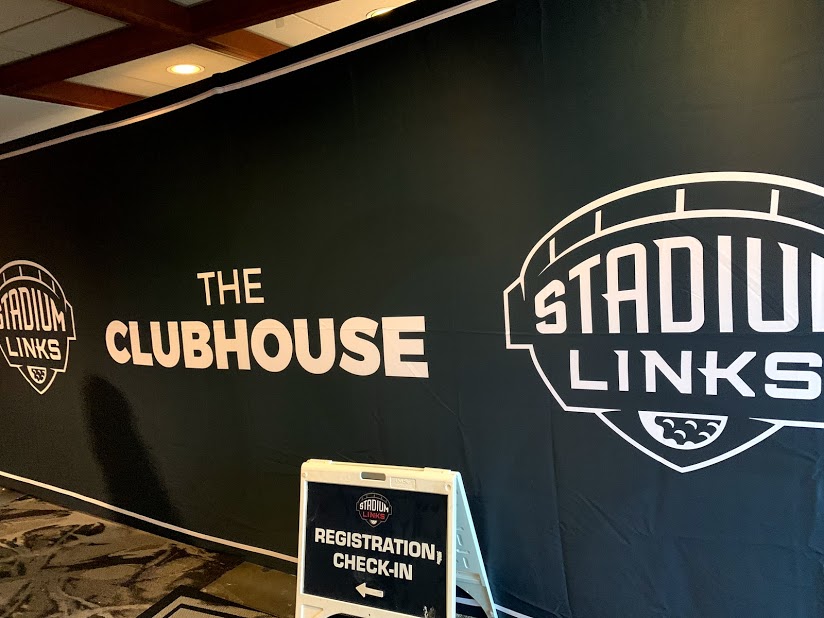



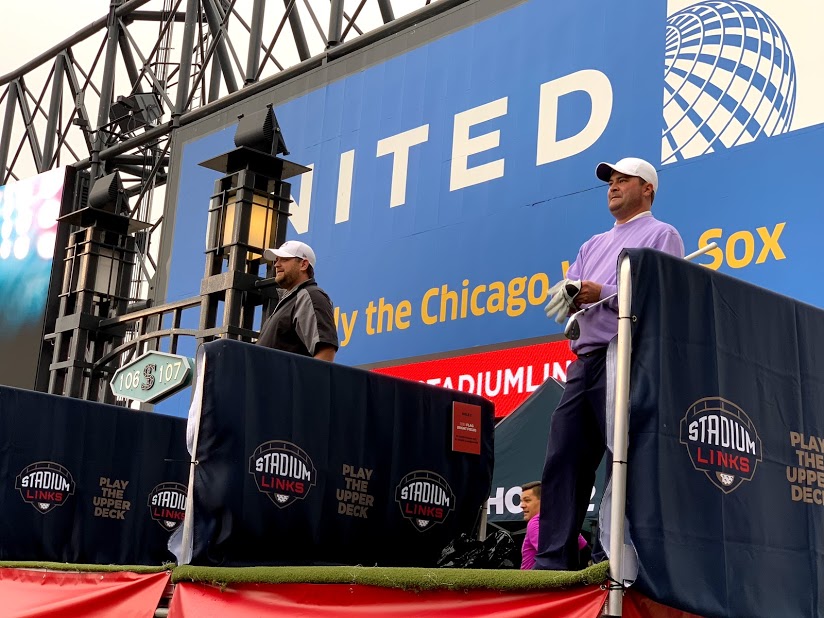

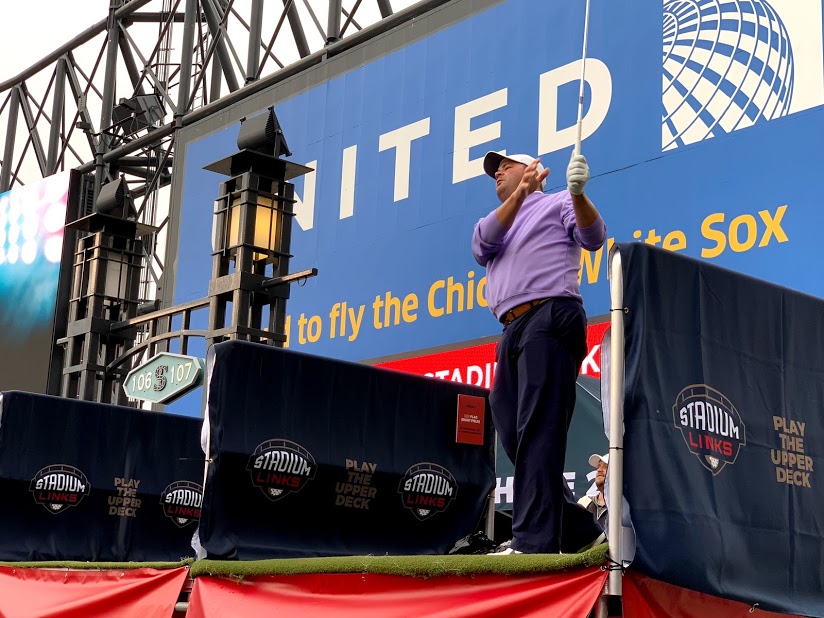
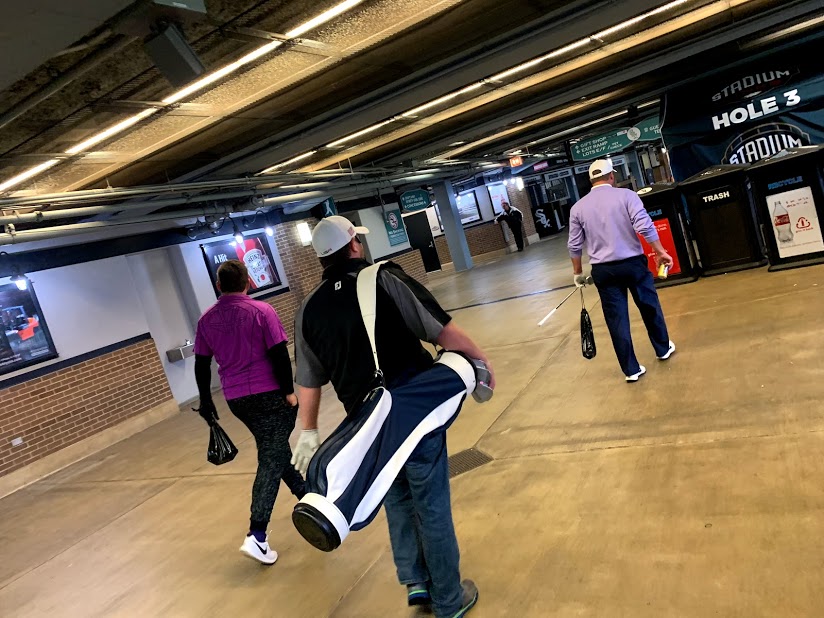

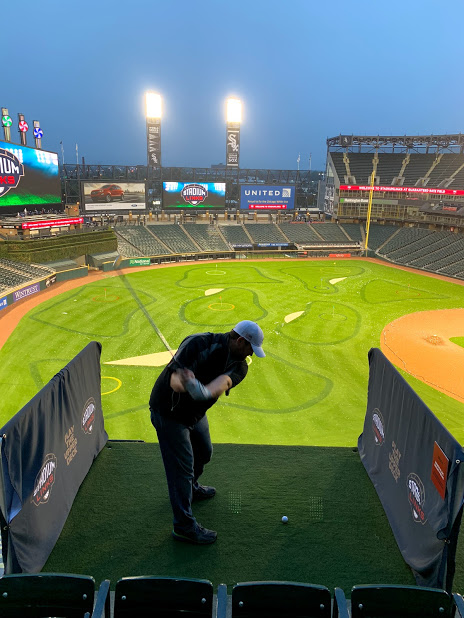

Costs were substantial
Stadiumlinks is not an inexpensive experience.
Understanding the unique nature of the event, tickets were $90 a person. That’s just to get in the door and reserve yourself a tee-time. Included in the price is access to the nine holes, 18 complimentary range balls to hit onto the field, and access to Tour Edge (sponsor) clubs available at every hitting bay (we chose to bring our own clubs).
There were also putting and chipping challenges available, which were an additional cost and totally optional. For example, we each tried the chipping challenge — which consisted of hitting 10 balls onto a cardboard box with scoring holes cut into it — for $10 a player.
What was also optional were the aforementioned food and beverages. Beers ranged from $6 - $10, and the limited food vendors were similarly priced. All things considered, you can expect to easily spend over $100 per person, which can be a considerable expense for the casual golfer.
However, I’m not so sure the “casual golfer” was the target demographic for Stadiumlinks, which is unfortunate.
Finding the right balance
Therein lies the challenge of any effort to grow the game. Stadiumlinks is definitely not going to bring more people to the game, and to be fair, they never make that claim anywhere on their website or promotional materials. However, there was an underlying sense of exclusivity built in to its business model.
During the four hours we spent goofing around, taking pictures, drinking, and hitting 18 golf balls each, none of us saw who could be considered “new golfers.” Everyone at the event were clearly experienced players who are comfortable hitting somewhat difficult golf shots while dozens of people watched. That’s intimidating.
Accessibility was also an issue. I’ll be blunt: if you need assistance walking or climbing stairs in any way, you’re not going to enjoy this walk. Many of the tee boxes required climbing stairs to some degree, and I didn’t see any alternative routes (elevators, etc) to reach the highest hitting locations.
Unintentionally, it seemed this was an experience to be enjoyed by a select few.
I realize all of that makes it sound like I did not enjoy Stadiumlinks, which is not true. I had an absolute blast and would go back in a heartbeat if they came around again in the future (Wrigley Field or Solider, anyone??). In fact, if they offered a replay option of, say, $30 I may have gone around a second time.
It’s just difficult to overlook the potential this experience had to excite the hell out of new players who would otherwise never think this would be a good time. For example, hitting golf balls at a discounted rate from a single location on the ground floor could be a less intimidating option.
I picture the conflicting efforts of growing the game while offering fresh experiences for established players as two trains of differing speeds heading in the same direction. The former, while slower, is gaining speed thanks to efforts like Top Golf and the #InviteHer campaign. Comparatively, the faster of the two remains to be that of the core golfer.
Jane Geddes and the #InviteHer Movement | Episode 176
LPGA great Jane Geddes joins the show to talk about the exciting new #InviteHer campaign.
Jane Geddes is an 11-time winner on the LPGA TOUR, a 2-time major winner, and an ambassador for the exciting new #InviteHER campaign.
Learn more at InviteHer.com.
US Ryder Cup Team Drama | Episode 175
The drama that continues to unfold among the US Ryder Cup team following their loss to Europe is not only ridiculous, it’s also embarrassing.
The United States Ryder Cup team has lost their minds following their loss to Europe, and Patrick Reed is causing most of the ruckus. Adam jumps on the podcast to rant about all the breaking news as the drama unfolds.
Adjustable Drivers, Effective Loft and You
Learn how to adjust your driver in this article. Effective loft is an important term to understand when using adjustable drivers next golf season. Here are some important tips to remember.
(Note: This is a 2013 article written shortly after the Christmas holiday.)
The Christmas holiday has come and gone. Thanks to your dedication to staying on his "nice" list, Santa left you a brand new adjustable driver under the Christmas tree. You're excited to play the best golf of your life, but there's one glaring question that you just can't shake from your mind:
How the hell do I use the adjustable settings on this beast?
Well kids, the best place to start is to visit your local golf pro for a proper club-fitting session. However, I wanted to introduce an adjustable driver term that may be new to most of you: effective loft.
In a nutshell, "effective loft" refers to how much loft your club will have AT IMPACT. This is an important distinction that you should keep in mind because we'll come back to this in a bit.
When I first started using an adjustable driver, it came pre-set to 9.0 degrees in the neutral setting. I typically like to play a 10.5 degree driver, so I wanted to find a way to increase its loft by using one of the many settings on the club. I was also fighting a nasty hook, so I also decided to open the face angle of the club a couple degrees. Next stop: the PGA Tour!
Not so fast. After making my adjustments (I increased the loft to 10.5 degrees and opened the clubface 2 degrees) and hitting a few drives, I was puzzled. While my hook was eradicated thanks to the open club setting, my drives were actually shorter than before and my ball flight was much lower. What gives?
In my mind -- which is a scary place -- opening the clubface of the driver should have added even more loft to my newly-adjusted 10.5 setting. After all, when you open the face of a sand wedge to hit a flop shot, you are adding a ton of loft to help shoot the ball into the air.
What I eventually learned was that opening the face of your driver via an adjustable setting has the opposite effect on loft. This is where effective loft comes in.
The effective loft of your driver will DECREASE one degree for every degree you open the face. The opposite is also true; clubhead loft will increase one degree for every degree closed.
Going back to my example, while I had increased the loft of my driver by 1.5 degrees (9.0 to 10.5 degrees) opening the face by 2 degrees ultimately decreased the driver loft by the same amount (10.5 to 8.5 degrees), leaving me with less loft than what I started with.
Effective loft suggests that you cannot truly change the loft and face angle of a club independent of one another. Furthermore, adjustable drivers all have the same goal in mind in regard to their buffet of clubhead settings: to help you square the clubface at impact. Adjustable drivers are built to react to your swing tendencies, not the other way around.
Before you start messing around with loft, lie and face angle settings on your new driver, be sure to educate yourself on how each setting interacts with one another.
The East Lake Redemption
What Tiger Woods accomplished at the 2018 Tour Championship wasn’t just special. It was unbelievable.
Redemption
What does it take to overcome the past, achieve the impossible, and rediscover an ability you once thought was gone forever? Could you find the will to do any of those things in private, let alone in the world’s spotlight on the grandest stage?
Most of us could not. In fact, it would be easier to simply lay down, give up, and assume that our best days were behind us, packed away like old holiday decorations in an attic, collecting dust drummed up by recent struggles and mistakes. What was once joyous is now hurtful; a pleasant memory now reminders of how good life once was.
Yeah, that would be easier.
But there are some of us who know you gotta get busy living, or get busy dying.
We All Saw Proof
I never thought Tiger Woods would ever win again.
Like many others, I had created a nice little mental shelf on which my memories of Augusta, Pebble, Medinah, Bay Hill, Firestone, and 74 others would rest comfortably until I died. I would access that shelf from time to time — usually to engage in golf banter with my friends, or perhaps to share with my child one day — but that museum of the mind was a place where old things died.
However, on September 23, 2018, the museum received another memory and nobody shut the doors behind them. The shelf would have to be reconfigured.
Hope returned, and hope is a good thing, maybe the best of things, and no good thing ever dies.
He Would Overcome
Picture the biggest and most embarrassing mistakes of your life, thrown out into the open for everyone in the world to see. Some would be trivial, others would be serious, but all would be your’s.
Imagine, too, that your body began to fail. A slight twinge in your back one morning would become multiple surgeries triggered by numbness, tingling, loss of function, and pain. Pain like you’ve never felt. Pain so strong that you couldn’t imagine feeling better again.
Imagine, too, that your resolve began to vanish, piece by piece, until you started to agree with the noise around you. You start to understand why doubt exists, and you begin to doubt yourself, too. In fact, you think about giving up entirely. You see no other option.
What would it take to push forward? Resilience? Stubbornness? Something else?
Salvation Lies Within
Not a day goes by that a man cannot feel regret. Not because of where we are today, but because we can’t go back and tell our younger self to act differently. That kid is long gone, and what we see in the mirror today is all that’s left.
But some birds aren’t meant to be caged. Their feathers are just too bright, and their ability is just too strong. And when you see what he can still do? Well… you’d think it was a sin to have locked him up in the first place.
What Tiger Woods did at East Lake Golf Club wasn’t just special; it was unbelievable. It was the culmination of the courage and determination that helped him break out of his mental cage months before. It was the resolve of a man who crawled through 500 yards of shit and came out of the other end.
Walking up to the final green must have felt surreal, even to him, a man who once led a frenzied, hopeful crowd at the Western Open years prior.
In a way, this year’s crowd — which included his fellow competitors in street clothes — seemed to be leading him, supporting him, showing him we all remember.
We all remember.
Worldwide Golf Enterprises | Episode 174
The president/CEO and VP of Marketing of Worldwide Golf Enterprises joins the show on today’s episode.
Al Morris, president and CEO, and Ben McCallister, VP of Marketing and Advertising of Worldwide Golf Enterprises joins the show to talk about their brands, partners, and exciting new promotions.




